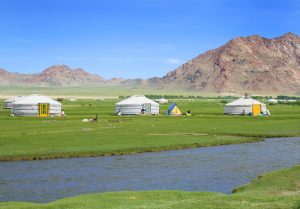In Mongolia, clean water is emerging as a vital sector that requires modernization. In the past decade, coupled with climate change and mass mining activities, Mongolia’s chronic water stress has impinged on the livelihood of Mongolians. 2019 marked a record-high shrinkage of small rivers, ponds, and springs in Mongolia.
One solution the government of Mongolia can pursue is accelerating bilateral ties with Scandinavian countries like Finland and Norway, leaders of the global clean water sector.
In 2020, the Asian Development Bank’s Asian Water Development Outlook (AWDO) program assessed Mongolia’s water security and highlighted impending challenges in the country’s water sector.
The “Overview of Mongolia’s Water Resources System and Management” assessment envisaged additional support and collaboration from both international and domestic actors, including the Mongolian government and its water governing agencies. The recommended improvements encompass water governance, systems management, and modernizing tools and technologies that can and will produce clean water in the future. Moreover, the assessment emphasized that Mongolia’s river basin organizations are fairly young, therefore, investment and innovation are readily available.
However, one key factor that must be recognized is that Mongolia’s water security differs depending on the region. For example, the capital of Mongolia, Ulaanbaatar, is home to two-thirds of the country’s population, and people continue to migrate from remote areas to the capital. With the swelling population comes pressure on the decades-old water and waste management systems, which are inundated by surging demand. In remote provinces, by contrast, the lack of modern waste management systems coupled with a shortage of clean water supplies is one of the reasons for migration to larger cities.
As with any major modernization effort, financial capability, investment, know-how, and technologies are fundamental to upgrading Mongolia’s water sector. The good news for Mongolia is that Ulaanbaatar’s third-neighbor foreign policy supports developmental initiatives and could leverage bilateral relations with countries like Finland and Norway to invest in clean water projects.
According to the Environmental Performance Index (EPI), Finland and Norway’s high standards on sanitation and clean water technology top any other countries in the world. The EPI consistently ranks Finland and Norway at the top in global sanitation and drinking water, followed by Iceland, the Netherlands, and Switzerland.
It is important for Ulaanbaatar to channel foreign expertise into solving Mongolia’s clean water issues. Ulaanbaatar already has diplomatic relations with Finland and Norway, allowing a clear path to initiate clean water projects. On the other hand, clean water initiatives can also serve as an important bilateral mechanism to reinforce and strengthen ties that have been stagnant for some time.
Ulaanbaatar’s third neighbor’s foreign policy is predominantly proactive in the Asia-Pacific region. This is understandable considering the country’s geographical constraints. Nonetheless, when it comes to seeking investment in critical sectors such as clean water, Ulaanbaatar can be, and perhaps needs to be, more selective and pro-development versus solely depending on its mining activities. Addressing pressing issues and the discussion on improving critical sectors must come from the Mongolian government.
From a foreign policy standpoint, Ulaanbaatar’s third neighbor policy provides flexibilities that Mongolia can utilize. In practice, this means that government agencies are constantly searching for bilateral and multilateral cooperation in developmental projects.
From a macroeconomic perspective, newer initiatives can not only address critical needs but also help diversify Mongolia’s mining-dependent economy. More importantly, the modernization of the clean water sector is closely tied to human and public health. Unless water security issues are solved from the ground up, eventually they will become a major public health concern.
Adopting knowledge, experience, and technology from the Scandinavian countries can improve Mongolia’s current clean water system. Finland and Norway also are exemplary countries for maritime and forestry environmental care.
In 2022, the 14th Joint Commission on Economic, Scientific, and Technological Cooperation Between Finland and Mongolia took place in Ulaanbaatar. The joint commission discussed revitalizing economic cooperation between the two countries and mentioned the environment, forestry, and renewable energy sector.
Among Mongolia’s third neighbors, the United States is currently investing in a first-of-its-kind clean water project in Mongolia. With the signing of the Mongolia Water Pact in 2018, the U.S. and the government of Mongolia aimed to invest a total of $350 million dollars; so far $280 million dollars have been granted for the project.
The Mongolian government – and domestic organizations that support and advocate for clean water – need to focus on allocating finances and investments to important sectors such as finding solutions for clean water, water scarcity, and protecting water beds. But these actors must also devote equally valuable time and energy to recruiting foreign partners to help address Mongolia’s water security.

































